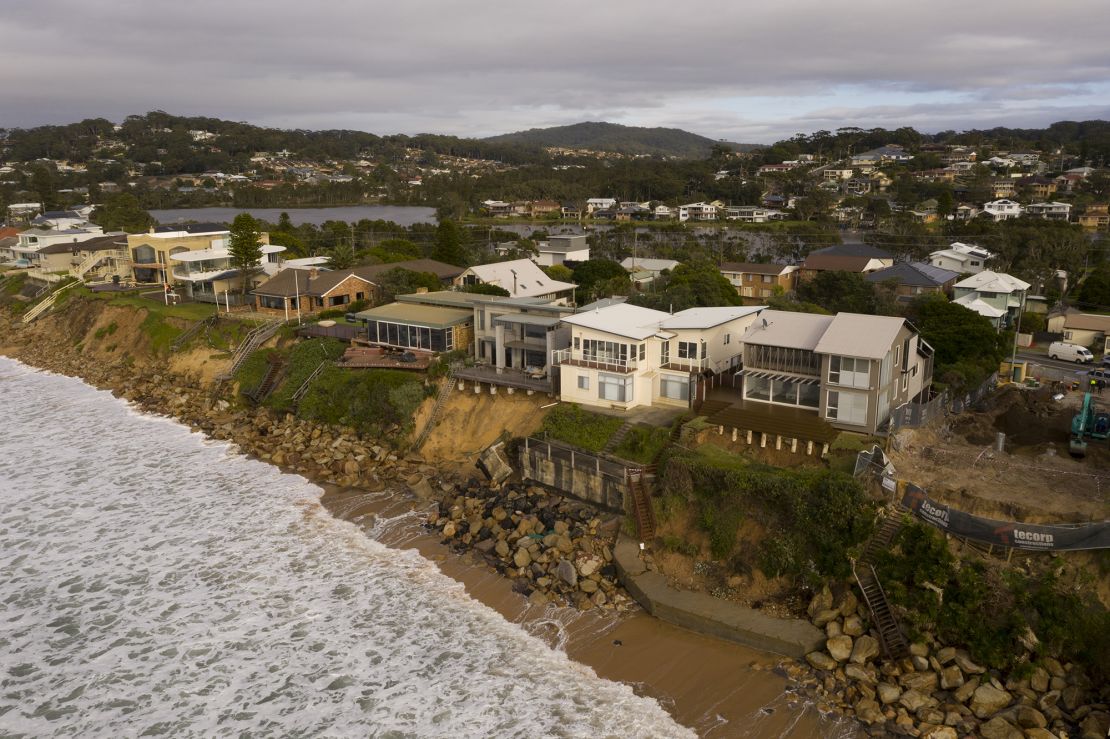Recent news from ABC Australia highlights the increasing impact of extreme weather events on coastal property prices and insurance costs. The article, written by Nick McLaren, underscores the vulnerabilities faced by homeowners, especially in high-risk zones. Approximately 230,000 properties in Australia are at a one-in-20 risk of catastrophic floods annually - with more than half of these properties in NSW alone. This growing threat has prompted calls for proactive measures, such as property buy-backs and halting new housing developments in these areas.

Beachfront homes in Wamberal have experienced damage during storms and sea swells for decades. (Image: CNN)
Rising Home Insurance Costs and Their Impact on Coastal Homeowners
As extreme weather events become more frequent and severe, insurance premiums are soaring, particularly for homeowners in coastal areas. This surge in insurance costs has several implications for homeowners:
Affordability Concerns: Many homeowners are finding it increasingly difficult to afford flood and storm insurance, with some facing premiums of tens of thousands of dollars annually. This financial strain can lead to underinsurance or, worse, homeowners opting out of insurance altogether, leaving them vulnerable to significant financial losses.
Property Values: The risk associated with extreme weather is starting to influence property values. While some areas remain resilient, others are experiencing a decline in property values, particularly in regions prone to flooding and erosion. Properties not built to withstand such events are particularly at risk.
Market Stability: The stability of the housing market in these areas is being tested. Although some regions are currently holding their value, the long-term outlook suggests potential declines as extreme weather events continue to impact these communities.
Investment Decisions: Prospective buyers are increasingly aware of geotechnical risks and are factoring these into their investment decisions. This shift in buyer behaviour could lead to a more cautious market, impacting sales and development in high-risk zones.

Climatics provides users with a comprehensive overview of asset risks by examining historical severe weather event data. Our service is essential for businesses & industries such as home lenders that need to understand climate trends and risks in specific localities. By leveraging our extensive database and analytical tools, businesses can make informed decisions to mitigate potential losses and enhance their resilience against extreme weather events.
Supporting Lending Agencies and Environmental Consultants
Climatics offers valuable insights into climate trends in various localities for lending agencies and environmental consultants. By understanding historical weather patterns and projecting future risks, these professionals can better assess the viability and sustainability of projects. This information is crucial for advising clients on the potential impacts of climate change on their investments and development plans.
Enhancing Insurance Industry Insights
Climatics helps insurance companies gain a comprehensive understanding of weather-related risks across Australia. Our data fills gaps where insurers might not have policyholders, providing a whole-of-Australia vision. This comprehensive approach enables insurers to better evaluate their portfolio risks, adjust premiums accurately, and develop strategies to minimise losses from extreme weather events. By identifying trends and high-risk areas, insurers can advocate for preventative measures, such as improved building standards and strategic planning.
Nick McLaren's ABC article highlights that with the growing threat of extreme weather events, preventative measures backed by reliable climate data need to be urgently taken. It quotes Andrew Dyer from IAG as saying, "What we really need to be doing is to get ahead of the problem, and that means we need to stop building new communities in harm's way, putting dwellings in high-hazard risk zones.". Climatics can assist by providing the most comprehensive and detailed historical weather data and risk analysis to businesses and insurance companies which are needed to navigate these challenges effectively. Through leveraging historical trend analysis, we can begin to mitigate risks and prepare communities for a more resilient future.
Contact our Climatics sales team today for more information.